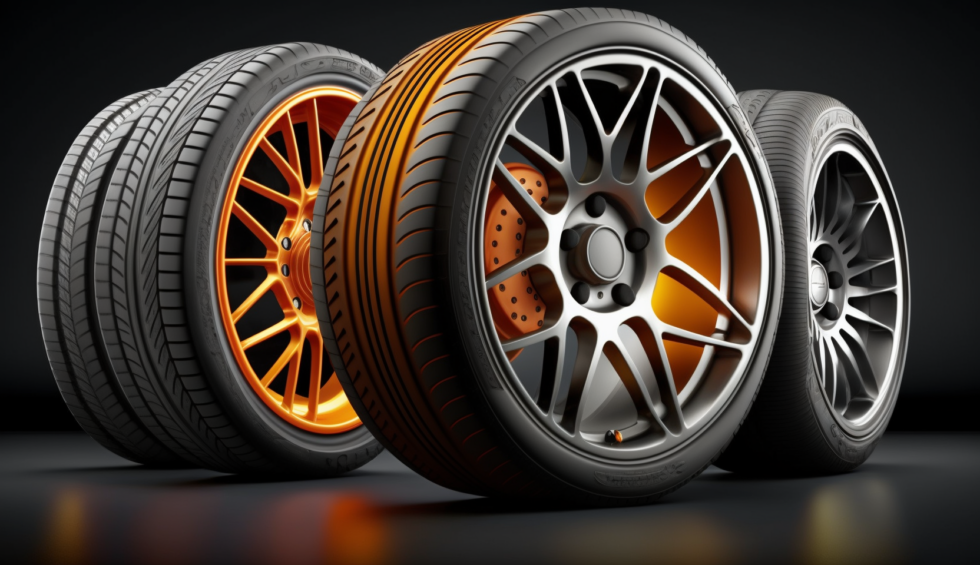Choosing the Right Tires for Your Vehicle


As a driver, selecting the appropriate tires for your vehicle is crucial for safety, performance, and longevity. There are different types of tires available on the market, including all-season, summer, winter, performance, and off-road tires. In this guide, we will provide comprehensive information to help you select the right tires for your driving needs, climate, and budget.
Tire Types
The following are the five main types of tires:
- All-Season Tires
All-season tires are the most common type of tires and are designed to provide reliable performance in various weather conditions, including light snow. They have a tread pattern that balances dry and wet performance, providing a smooth and quiet ride throughout the year. All-season tires are a popular choice for drivers who don’t want to switch between summer and winter tires.
- Summer Tires
Summer tires are engineered to provide maximum grip and performance in warm weather conditions. They have a lower profile and are made of a softer rubber compound for improved handling. Summer tires offer excellent cornering and braking performance, making them ideal for high-performance vehicles.
- Winter Tires
Winter tires, also known as snow tires, are designed for maximum traction in snowy and icy conditions. They have a unique tread pattern that expels snow and slush, providing excellent grip on slippery surfaces. Winter tires have a softer rubber compound that stays pliable in cold temperatures, ensuring maximum traction.
- Performance Tires
Performance tires are designed for high-performance vehicles and provide superior handling and grip at high speeds. They are typically made of a softer rubber compound and have a more aggressive tread pattern, providing increased traction and handling performance in dry and wet conditions.
- Off-Road Tires
Off-road tires are engineered for trucks and SUVs and are made to handle rough terrain and gravel roads. They have a more aggressive tread pattern and larger sidewalls for improved traction and durability. Off-road tires can provide excellent grip on challenging terrain, including mud, sand, and rocks.
- Tire Sizes
Understanding tire sizes is crucial when selecting the right tires for your vehicle. The size of your tires can affect your vehicle’s handling, fuel economy, and ride comfort. The size of your tires is typically found on the side of the tire and looks like this: P215/60R16.
The table below explains the different components of a tire size and their meaning:
| Component | Meaning |
| P | Indicates that the tire is for passenger vehicles |
| 215 | Width of the tire in millimeters |
| 60 | Aspect ratio, which is the height of the tire’s sidewall as a percentage of the width |
| R | Radial construction |
| 16 | Diameter of the wheel in inches |
It is essential to ensure that you purchase the correct tire size for your vehicle. Using the wrong size can cause handling issues, negatively affect your vehicle’s fuel economy, and cause tire damage. You can find the correct tire size for your vehicle in your owner’s manual or on the driver’s side door jamb.
Assessing Your Needs
Once you understand the different types of tires and tire sizes, the next step is to assess your driving needs. This includes determining what type of driving you do, considering climate and weather conditions, and budget considerations.
Determining what type of driving you do involves considering whether you primarily drive on the highway, in the city, off-road, or for racing purposes. Highway and city driving typically require all-season or summer tires, while off-road driving requires off-road tires. Racing requires performance tires.
Considering climate and weather conditions is also important. If you live in an area with hot and dry weather, you’ll want to consider tires with a harder rubber compound for increased durability. If you live in an area with wet and rainy weather, look for tires with good wet traction. If you live in an area with snowy and icy weather, winter tires are a must.
Budget considerations should also be taken into account. While it’s tempting to go for the cheapest option, investing in higher-quality tires can save you money in the long run. Cheaper tires may need to be replaced more often, leading to higher costs over time.
Key Features to Consider
When it comes to choosing the right tires for your vehicle, there are several key features that you need to consider. Here are some of the most important features to keep in mind:
Tread Design
The tread design of a tire plays a crucial role in its performance. Different types of treads are designed for different driving conditions, so it’s important to choose a tire with a tread design that is appropriate for your needs.
For example, tires with deep grooves and sipes are ideal for wet and snowy conditions because they provide excellent traction on slippery surfaces. On the other hand, tires with a shallower tread and wider grooves are better suited for dry conditions because they offer better handling and stability.
Tread Wear Rating
The tread wear rating is a measure of how long a tire’s tread is expected to last. This rating is determined by testing the tire’s durability under controlled conditions, and it’s expressed as a number from 100 to 800.
Generally, the higher the tread wear rating, the longer the tire is expected to last. However, it’s important to keep in mind that tread wear is affected by several factors, including driving habits, road conditions, and climate.
Speed Rating
The speed rating of a tire is a measure of its maximum speed capability. This rating is expressed as a letter, and it ranges from Q (99 mph) to Y (186 mph).
If you plan on driving at high speeds, it’s important to choose a tire with an appropriate speed rating. However, it’s also important to keep in mind that higher speed ratings often come with lower tread wear ratings, so it’s important to find a balance between speed and durability.
Load Index
The load index of a tire is a measure of its maximum load capacity. This rating is expressed as a number, and it ranges from 0 to 279.
If you plan on carrying heavy loads or towing a trailer, it’s important to choose a tire with an appropriate load index. However, it’s also important to keep in mind that higher load index ratings often come with lower speed ratings, so it’s important to find a balance between load capacity and speed.
Tips for Buying Tires
Now that you know what to look for in a tire, it’s time to start shopping. Here are some tips to help you make an informed decision:
- Researching Brands and Models: Before purchasing any tires, take some time to research the brands and models available. Look for reviews and ratings from other drivers to get an idea of their experiences with certain tires. Visit the manufacturer’s website to learn more about their products and what they offer. While some of the most popular tire brands include Michelin, Goodyear, and Bridgestone, there are plenty of other reputable brands to choose from, so don’t be afraid to explore all of your options.
- Buying from a Reputable Dealer: It’s important to choose a reputable dealer when purchasing tires. Look for a dealer that has a good reputation and offers a wide range of products. Consider buying from a dealer that offers installation services to save you time and hassle.
- Checking for Warranties and Guarantees: Before making a purchase, be sure to check for warranties and guarantees. Most tire manufacturers offer a limited warranty that covers defects and workmanship, but it’s essential to check the specifics of each warranty. Additionally, you may want to consider purchasing a road hazard warranty to protect your tires from damage caused by road hazards like nails, glass, and potholes.
Remember, buying the right tires for your vehicle is critical for your safety, performance, and longevity on the road. By following these tips, you’ll be well on your way to selecting the best tires for your needs and driving habits.
Maintenance and Care
Taking care of your tires is crucial for ensuring their longevity and optimal performance. Here are some key aspects to consider when it comes to tire maintenance and care.
Inflation and Pressure Checks
Maintaining proper tire inflation is one of the most important aspects of tire care. Underinflated tires can cause poor handling, reduced fuel efficiency, and even tire failure. Overinflated tires, on the other hand, can result in a harsh ride and increased risk of blowouts.
To ensure that your tires are properly inflated, it’s recommended that you check their air pressure at least once a month using a tire pressure gauge. You can find the recommended pressure levels for your tires in your vehicle owner’s manual or on a sticker inside the driver’s door jamb.
Rotating and Balancing
Rotating your tires involves moving them from one position to another to ensure even wear. This should be done regularly, typically every 5,000 to 8,000 miles, or as recommended by your vehicle manufacturer.
Balancing your tires involves making sure that the weight of the tire and wheel assembly is evenly distributed around the axle. Unbalanced tires can cause vibrations that lead to uneven wear and poor handling. It’s recommended that you have your tires balanced whenever they are rotated, or if you experience any unusual vibrations while driving.
Alignments
Wheel alignments ensure that your tires are properly angled and aligned with the road, which helps to ensure even wear and optimal handling. It’s recommended that you have your alignment checked every 6,000 miles or so, or if you notice any signs of uneven tire wear or steering issues.
If you hit a curb or pothole or get into an accident, it’s also a good idea to have your alignment checked, as this can cause misalignment.
FAQ
One way to check if your tires need to be replaced is to use the penny test. Insert a penny into the tread of your tire with Lincoln’s head upside down. If you can see the top of Lincoln’s head, it’s time to replace your tires. You should also look for signs of uneven wear, bulges, or cracks in the tire.
While it’s possible to replace just one tire at a time, it’s generally recommended that you replace all four at once to ensure even wear and optimal performance. If you do need to replace just one tire, make sure it’s the same size and type as the others on your vehicle.
All-season tires are designed to provide good performance in a range of conditions, including dry, wet, and light snow. Winter tires, on the other hand, are specifically designed for cold and snowy conditions, with deeper treads and softer rubber compounds that provide better grip in these conditions. If you live in an area with heavy snowfall, it’s recommended that you switch to winter tires during the colder months.



